INSIDE ISSUE 18.31 | AUG. 2, 2019
 NEWS: Carbon emissions drop in Southeast, S.C. eyes further action
NEWS: Carbon emissions drop in Southeast, S.C. eyes further action
NEWS BRIEFS: S.C. falls short on cancer public policies, report says
COMMENTARY, Brack: Reject hate and fury by taking high road toward future
SPOTLIGHT: Francis Marion University
MY TURN, Campbell: Book on Emanuel shootings is important to read
FEEDBACK: On Medicaid expansion, USC and weed
MYSTERY PHOTO: Bridge to somewhere
S.C. ENCYCLOPEDIA: Oratory in South Carolina
BIG STORY: Carbon emissions drop in Southeast, S.C. eyes further action
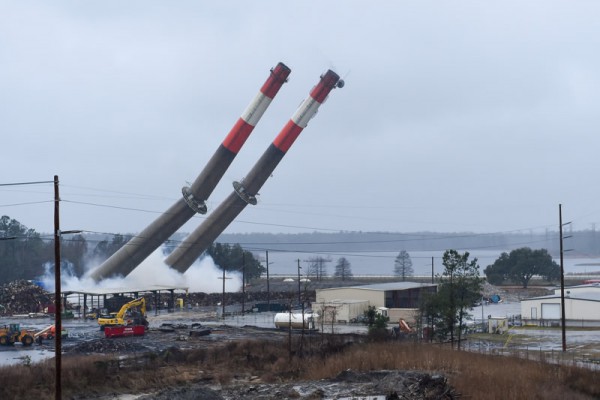
By Lindsay Street, Statehouse correspondent | The next 18 months could determine the future of carbon dioxide emissions in South Carolina, according to energy analyst Eddy Moore.
A new report by the Southern Alliance for Clean Energy found the Southeast U.S. has seen a 28 percent decrease in carbon dioxide emissions from the generation of electricity over the last decade. South Carolina has seen a 33 percent decrease among utility emissions. But it may not be enough to stave off global climate change.
Electricity production is the top emitter of carbon dioxide in the Southeast. Two looming decisions could allow South Carolina to decrease carbon emissions additionally, according to Moore, who is director of energy and climate programs at the Coastal Conservation League.

First is the decision over how much should solar farms receive for power they generate. In November, the state Public Service Commission will begin implementing parts of the S.C. Energy Freedom Act — the price to pay solar farms. And if solar farms are given a fair price for power, they will begin competing head-to-head with the remaining coal plants. As solar-power generation prices drop, Moore said they will begin to out-compete natural gas, too.
Then in 2020, state lawmakers will decide whether to privatize or restructure Santee Cooper, the state’s largest power generator. Moore said they need to consider carbon dioxide reductions as part of that decision.
“The question there is, is that going to be a largely natural gas-based plan or a largely solar and efficiency plan?” Moore said.
Cooling on coal
South Carolina emits more pounds of carbon dioxide per megawatt hour than the Southeastern average, according to the Southern Alliance for Clean Energy’s “Tracking Decarbonization in the Southeast.” Carbon dioxide, usually referred to as just “carbon,” is a leading greenhouse gas emitted by human activity and linked to climate change, according to the U.S. Environmental Protection Agency.
But the report had good news: carbon emissions for the state and region are already dropping — even without big legislative or regulatory action.
“This report shows we have already made progress, which is heartening,” Moore said.
There currently are five coal-fired plants between state-owned Santee Cooper and Dominion Energy South Carolina (formerly South Carolina Electric & Gas, SCE&G), which are among the top five carbon-emitting utilities in the Southeast. Three have closed in recent years, and one station has converted to dual-fire, meaning it can also run on natural gas.
Utilities throughout the Southeast are retiring coal-powered plants in favor of natural gas plants, which emit half the amount of carbon. The report found that nuclear-power generation remained steady, while there has been growth among renewable energy, especially solar.
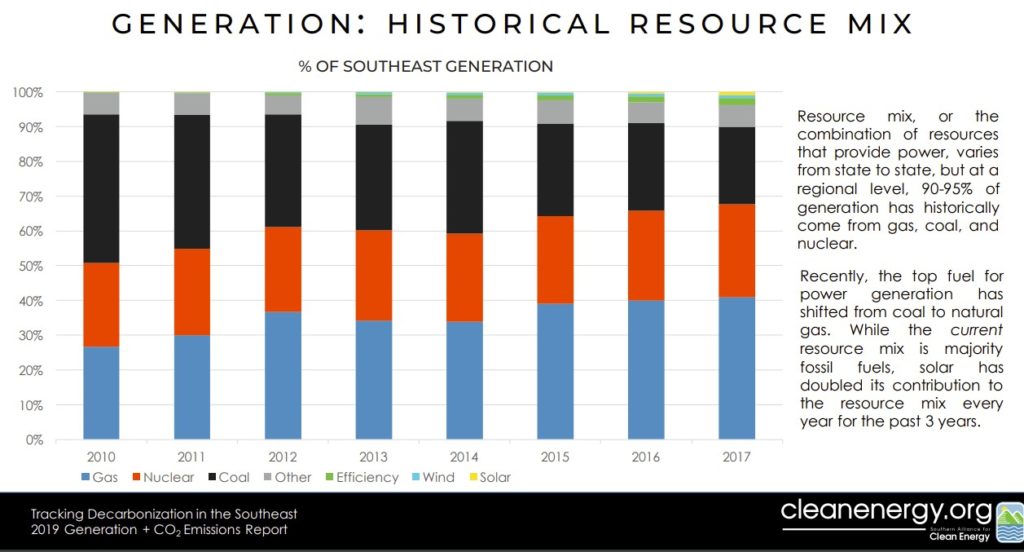
In South Carolina, emissions from power generation have dropped from 59.5 million short tons (2,000 pounds) of carbon in 2010 to 39.8 million short tons in 2017. If utilities in the state continue business as usual, that number is expected to decrease further to 36.3 short tons.
In 2017, Santee Cooper emitted 14 million short tons of carbon dioxide. That figure is nearly half of what it emitted in 2010 (25.6 million short tons). The utility has retired two coal-fired plants and currently has two other coal-fired plants operating with no plans to close either, according to Santee Cooper Corporate Communications manager Mollie Gore.
“Santee Cooper has been steadily reducing our reliance on coal generation over the past decade, as we’ve added more renewables, maximized output at our own natural gas station and increased our purchase of off-system natural gas-fueled generation to take advantage of the low natural gas prices,” Gore said. “We’ve gone from a generation mix that was 77 percent coal in 2008 to one that was 46 percent coal last year.”
And that was during the utility’s bungled bet on nuclear, where it and SCE&G poured billions of dollars in a failed attempt to expand nuclear generation. The project was shuttered in 2017.
“The goals specifically to our generation included expanding the nuclear footprint and, of course, that hasn’t happened,” Gore said. The company does not have a specific goal set for the future. But that could change as lawmakers eye privatization or restructuring the utility, and the utility has a new CEO, Mark Bonsall. Bonsall formerly ran public utility Salt River Project in Arizona, which had emission-reduction targets.
In 2017, SCE&G emitted 13.1 million short tons of carbon dioxide — a slight decrease over its 2010 emissions of 13.8 million short tons. Also that same year, the utility shuttered one of its coal plants. Dominion South Carolina has no plans to close its three remaining coal plants in the state, according to Dominion Public Affairs Specialist Paul Fischer.
“We are doing our part by investing heavily in low- and no-carbon energy such as natural gas, additional solar resources and off-shore wind generation,” Fischer wrote in a statement to Statehouse Report. He also cited that the utility worked with lawmakers on the Energy Freedom Act, which directs the Public Service Commission to work with renewable energy farms and utilities.
Duke Energy Carolinas, which has the smallest footprint in South Carolina but covers most of North Carolina , emitted 30.3 million short tons regionally in 2017 — a 25 percent decrease over what it emitted in 2010 (40.5 million short tons). The utility’s parent company, Duke Energy, was spotlighted in the report for its commitment to reduce its 2005 carbon dioxide emissions by 40 percent before 2030.
But the report and its authors warned that the move to natural gas is not the ideal solution for decreasing greenhouse gas emissions.
“The process of drilling for and delivering gas to the region causes extremely high methane emissions, primarily due to leaks in the gas transmission system. This leakage is referred to as ‘fugitive emissions’ of methane, and many utility systems are beginning to track them due to aging gas pipelines and infrastructure,” the report said. Methane is another greenhouse gas linked to climate change.
Additionally, SACE Deputy Director of Regulator Policy John Wilson of Washington, D.C., said Thursday that, even with falling carbon emissions, the region is still “falling short of the goals that scientists are recommending to avoid the worst of the climate crisis.”
Moore said more needs to be done.
On the horizon
Imagine that prior to flipping a switch on in your house, you decided how that power would be generated. Would you choose coal? Natural gas? Solar?
One state lawmaker said he wants to make buying electricity akin to buying bread. Like choosing whole wheat, a customer could choose to buy power generated solely by solar.
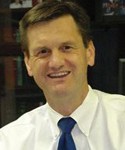
S.C. Sen. Tom Davis, R-Beaufort, said the path toward making that decision is already in progress with the 2019 Energy Freedom Act.
“There is going to be more energy legislation next year. A first step to free and fair markets is a public awareness of which energy producers generate more of these emissions than others. That education role is critical so the public becomes aware,” Davis said.
Davis said he has one big objective in mind: abolishing territorial monopolies held by utilities. He said he’s working toward the incremental changes needed to achieve the goal, expecting it to take years. It took two sessions for the legislature to pass the Energy Freedom Act.
Moore said it is unlikely the state legislature will pass any carbon-reduction goals, but said the recently passed act and a move toward allowing customers to choose will help reduce emissions.
- Have a comment? Send to: feedback@statehousereport.com
NEWS BRIEFS
S.C. falls short on cancer public policies, report says
By Lindsay Street, Statehouse correspondent | South Carolina lacks policies and legislation to prevent cancer, reduce its suffering and curb deaths from the disease, according to a progress report by the American Cancer Society.
![]() In 2019 alone, South Carolina will see nearly 30,000 people diagnosed with cancer, the report said
In 2019 alone, South Carolina will see nearly 30,000 people diagnosed with cancer, the report said
“We owe it to them—and to everyone at risk of developing this disease—to do everything in our power to prevent cancer and improve access to screenings and treatment,” said Beth Johnson, South Carolina government relations director for the Society.
“How Do You Measure Up?: A Progress Report on State Legislative Activity to Reduce Cancer Incidence and Mortality,” which was released Aug. 1, says South Carolina met policy recommendations in just two of the eight evaluated issue areas: access to palliative care and Medicaid coverage of tobacco cessation services.
The report found the state got poor marks in six other areas: increased access to care through Medicaid, balanced pain control policies, cigarette tax levels, smoke-free laws, funding for tobacco prevention and cessation programs, and restricting indoor tanning devices for people under 18.
The S.C. House passed a bill banning teens from commercial tanning beds earlier this year. It awaits a Senate vote in early 2020.
Tobacco also continues to be a concern in South Carolina, according to the report, which warned lawmakers not to weaken any policies, but strengthen laws against tobacco use.
In other news:
Sales tax holiday underway. Statehouse Report last week reported that 2019 could be the end of sales tax holidays in the state (the holiday began today and continues through Sunday, exempting specific items from the state’s 6-percent sales tax). The death of it could come from sales tax reform in 2020. House Speaker Pro Tempore Tommy Pope is a lead sponsor on the legislation. After the article came out, Pope told Statehouse Report: “If the legislation passes, every day will be a sales-tax holiday in South Carolina.” Instead of 6 percent sales tax on items with a whole list of exemptions, the bill seeks to remove all exemptions (and the sales-tax holiday) and have a statewide rate of 3 percent.
Rally against offshore drilling Aug. 5. A “Rally to Protect Our Coast” is planned 6 p.m. to 8 p.m. Aug. 5 at Charleston Harbor Resort in Mount Pleasant. U.S. Rep. Joe Cunningham, a Democrat, and S.C. Sen. Chip Campsen, a Republican, will be speaking. Other state and local leaders also will be in attendance. More info.
Massive awareness campaign for census launched. Gov. Henry McMaster has created a massive committee to raise awareness about the 2020 census, according to an announcement he made this week. On Thursday, he stressed the importance of getting every South Carolinian counted. Read more.
Tell DOT about your transportation vision. The S.C. Department of Transportation is seeking public input for its 2040 vision plan. How would you spend transportation money? Better intersections? More bike lanes? Passenger rail? Take the survey.
State parks see consecutive, record-breaking year. The state’s 47 parks brought in more than $34 million during the 2018-2019 fiscal year. The park system is working toward a goal of becoming financially self-sufficient. Read more.
House panel to look at state prisons. An ongoing House ad hoc committee will continue its review of the Department of Corrections at 10:30 a.m. Aug. 12 in room 110 of the Blatt building. The committee will review a study of the department. Read the agenda.
Senate panel to discuss school governance, accountability. A Senate Education subcommittee will meet 1 p.m. Aug. 14 rto discuss education accountability and governance as part of the education overhaul bill. Read the agenda.
2020 candidate calendar
 Throughout the campaign season, we are working to keep South Carolina informed of candidate events in the state. Have an event you want us to know about? Email us at 2020news@statehousereport.com.
Throughout the campaign season, we are working to keep South Carolina informed of candidate events in the state. Have an event you want us to know about? Email us at 2020news@statehousereport.com.
Ryan meets in Columbia. Democratic presidential candidate U.S. Rep. Tim Ryan of Ohio will be at a meet and greet 5 p.m. Aug. 4 at the home of Don and Carol Fowler in Columbia. Attendees must pre-register. Learn more.
Booker returns to South Carolina in two-day sweep. Democratic presidential candidate U.S. Sen. Cory Booker of New Jersey will be in South Carolina Aug. 5-6. The events include:
- Conversation with Cory, 5:30 p.m. Aug. 5 at ILA Hall in Charleston;
- A meet and greet, 9:30 a.m. Aug. 6 at Bucksport Senior Center in Conway; and,
- Conversation with Cory, 5:30 p.m. Aug. 6 at the Luther Carter Center for Health Sciences at Francis Marion University in Florence.
Looking ahead
Click below for other items coming up in the Statehouse:
Find any bill
- House bills
- Senate bills
- Have a comment? Send to: feedback@statehousereport.com
BRACK: Reject hate and fury by taking high road to future

By Andy Brack, editor and publisher | One of the best things about vacationing in Quebec for the last week has been that we haven’t had to listen to people talk about Donald J. Trump.
 Most of the newspapers and television stations are in French, as is much of the conversation overheard while visiting interesting places in Montreal and in villages just north of the border with America.
Most of the newspapers and television stations are in French, as is much of the conversation overheard while visiting interesting places in Montreal and in villages just north of the border with America.
But some of the tension gripping the United States slipped in, thanks to the ubiquitous nature of social media. This includes two of the most gripping opinion pieces we’ve read in months.
First came The Baltimore Sun’s defense of its city after the president attacked it for being infested with rats. Even South Carolina’s GOP U.S. Sen. Tim Scott seemed to think Trump went too far, telling The State newspaper, “I think anytime you leave the impression, intended or not, that you’re targeting vulnerable people, I say, ‘God have mercy on the party.’”
But The Sun should win a Pulitzer Prize for its unblanched look at a presidency marked more by insult than any iota of decency. Here’s an excerpt from “Better to have a few rats than to be one:”
“Finally, while we would not sink to name-calling in the Trumpian manner — or ruefully point out that he failed to spell the congressman’s name correctly (it’s [Rep. Elijah] Cummings, not Cumming) — we would tell the most dishonest man to ever occupy the Oval Office, the mocker of war heroes, the gleeful grabber of women’s private parts, the serial bankrupter of businesses, the useful idiot of Vladimir Putin and the guy who insisted there are “good people” among murderous neo-Nazis that he’s still not fooling most Americans into believing he’s even slightly competent in his current post. Or that he possesses a scintilla of integrity. Better to have some vermin living in your neighborhood than to be one.”
And if you thought that was explosive, turn South to Alabama, where columnist John Archibald talked with a daughter of former Gov. George Wallace, whose race-based 1968 and 1972 presidential campaigns have parallels to the rhetoric coming from Trump’s White House. In a July 31 commentary headlined, “George Wallace’s daughter: ‘I’ve never seen anything like it,’” Archibald describes how Peggy Wallace Kennedy said as a child, she didn’t understand the hate and vitriol of her father’s national campaigns.
“She understands now,” Archibald wrote. “She understands all too well. Her father was wrong. ‘We cannot go backward,’ she told a group of teachers at the Birmingham Public Library last week. ‘We have to go forward.’”
Wallace Kennedy, who has a book coming out later this year about dealing with her father’s legacy, did not mention Trump, Archibald wrote. But in the column, she said the nation’s political throes a look a lot like what happened in her world in the 1960s.
“Each of us individually need to act with compassion and pray for our democracy. I hope we don’t go back. But it looks like where we are slipping … that seems to be where the top is taking us. … I’ve never seen anything like it. I saw Daddy a lot in 2016.”
The escalating, hate-filled rhetoric spewed by today’s president isn’t going to diminish. It might calm down for a few days here, a few days there. But the language of fear will continue to rise because, as Archibald wrote, it works: “Fanning the flames of fury works on crowds way better than policy solutions or wonkish approaches to governmental reform. Play on the resentments and you never have to get too deep into answers.”
For America to end this McCarthy-esque era of bullying, lying and rage, Democrats will have to do more than fiddle along the 2020 campaign trail. They will have to exile wishy-washiness from their modus operandi. They can’t base their campaigns only on being against Trump.
In short, they have to be FOR something big. They have to promote better opportunities for all Americans so that we can earn more economically and heal as a society.
They’ve got a few months to figure it out. And if they don’t, look for the fire hydrants of hate and racism to continue and for people to look seriously at moving to places like Quebec.
- Andy Brack’s latest book, “We Can Do Better, South Carolina,” is now available in paperback and for Kindle via Amazon.
- Have a comment? Send to: feedback@statehousereport.com.
Francis Marion University
 The public spiritedness of our underwriters allows us to bring Statehouse Report to you at no cost.
The public spiritedness of our underwriters allows us to bring Statehouse Report to you at no cost.
We’re happy this week to shine our spotlight on Francis Marion University, a public university located in Florence, S.C. It was founded in 1970 with a mission to provide the people of the Pee Dee, and of South Carolina, with high quality, yet accessible, university education. FMU has stayed true to that mission for nearly 50 years. In any given year, more than 95 percent of the university’s students are South Carolinians, and FMU is, by most measures, the most affordable college in the state.
Francis Marion University is, of course, named for Revolutionary War hero, General Francis Marion, who was nicknamed “The Swamp Fox” for his uncanny ability to use terrain, local knowledge and just plain old South Carolina common sense to outfox the British. Today, FMU prides itself on providing a strong liberal arts education for its 4,000 students, while at the same preparing them for careers in a broad range of fields.
The University offers professional schools in health care, education and business, as well as graduate programs in business, education and psychology. FMU’s new School of Health Sciences is adding new programs, designed to help deliver critical medical services to the community, on an almost annual basis, so great is the demand by students and the need in our region and state. Recent undergraduate additions to the University as a whole include Health Care Management and Industrial Engineering. The latter, just begin in 2014, is already one of the fastest-growing majors on campus.
The campus is situated on over 400 wooded acres of beautiful foliage and landscaping. A significant campus presence in historic downtown Florence is also developing. FMU’s Performing Arts Center is located there along with the Carter Center for Health Sciences, and the FMU Recording Studio, The University recently acquired more downtown property near the Carter Center, which will help support future academic expansions.
FMU has managed to grow while at the same time providing South Carolinians with, as noted, an affordable university education. FMU’s total net cost — tuition plus room, board and other fees, less scholarships and grants awarded — is South Carolina’s lowest, and by a considerable margin, according to calculations performed by a third party, CollegeFactual.com. FMU has managed this unusual balance of quality and affordability by avoiding capital debt, minding administrative costs carefully, and developing a culture of giving among its many friends and supporters in the Pee Dee and beyond.
- To learn more about Francis Marion, visit online at fmarion.edu.
Book on Emanuel shootings is important to read
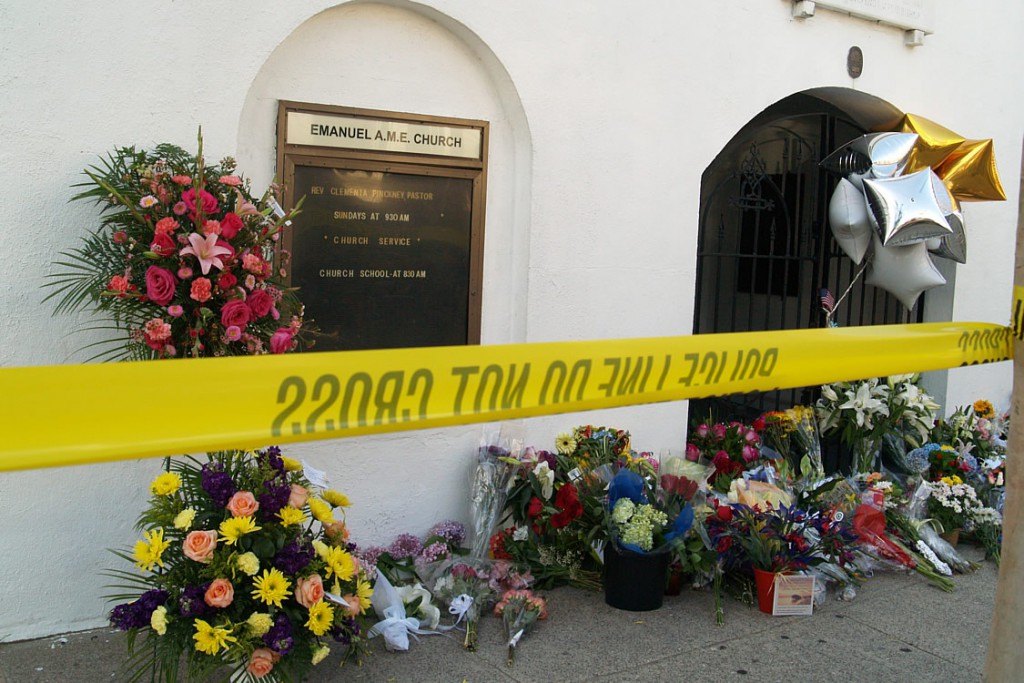
By Reba Hull Campbell, special to Statehouse Report | Rarely does a book appeal to all my “reading” senses – well written, important message, compelling story and human connections. “Grace Will Lead Us Home” about the shootings at Emanuel A.M.E. Church was one of them.
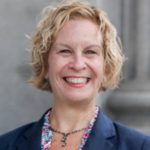
Back in June, I listened to an interview on the SC Lede podcast on SC Public Radio with the author of the book, Jennifer Berry Hawes. She’s a reporter for The Post and Courier who witnessed first-hand many of the details surrounding this tragedy.
After hearing Hawes’ podcast, I knew I had to read the book. And I knew I had to buy it and not just borrow it from the library or listen on Audible. I had a feeling it would be one of those books I’d want to mark up and re-read.
Once I got started on the book, I just couldn’t stop. For anyone who thinks they have an understanding of the facts, the emotions, the complexities or the passions surrounding the shooting, the trial and its aftershocks, this book illustrates there’s far more to this story than just an accounting of facts in a series of news reports.
I was fully expecting this book to be written in the style of a reporter – all facts, little emotion, neutral descriptions that would pass a newspaper editor’s muster. That’s not the case at all. The best way I can describe the book is the intersection of excellent journalism and passionate, purposeful storytelling. I later learned that Hawes had won a Pulitzer Prize, so I shouldn’t have been surprised at the elegance of her writing in this book.
What I discovered before I finished even the first two pages was a beautifully written story about an unimaginable human tragedy that affected people in ways we can’t possibly understand without being part of the story. That’s where Hawes’ writing comes in. She doesn’t just tell the story – she gently carries us into the story with a respectful, yet deeply insightful, narrative. She masterfully weaves together the lives and stories of the many people involved, while at the same time balances the issue of race relations that always simmers just below the surface.
There’s a sense of chronology in the way Hawes tells the story. However, the narrative doesn’t always run in order of what happened, which could make the book confusing if the writer had less finesse in the art of storytelling.
When I read writing by an author whose work really grabs me, I like to mark up the pages and go back and read those lines over and over. This book is now dog-eared with turned-down pages, numerous bookmarks and notes scribbled in the margins.
 Here’s one of my favorite passages. In describing how blacks and whites viewed differently efforts toward improving race relations as a result of the shooting, Hawes writes, “White people saw their gestures of unity as gracious and sincere, which they often were. But black people saw them as more akin to someone who writes a thank you note after dinner when they really should have offered to pay.” Think about it. What a vivid analogy to describe the situation.
Here’s one of my favorite passages. In describing how blacks and whites viewed differently efforts toward improving race relations as a result of the shooting, Hawes writes, “White people saw their gestures of unity as gracious and sincere, which they often were. But black people saw them as more akin to someone who writes a thank you note after dinner when they really should have offered to pay.” Think about it. What a vivid analogy to describe the situation.
I also loved her account of Gov. Nikki Haley’s visit with Felicia Sanders, one of the survivors. Hawes vividly describes the emotion of the occasion merging perspectives of everyone who was present. I felt I was sitting in the room with them as a respectful observer rather than a voyeur or third-party reader of a news story.
Hawes describes without judgment, yet with more than just a reporter’s detachment, how the church leaders at Emanuel AME Church failed the survivors and victims’ families in several ways. Her descriptions are accurate and human-focused without being sappy or judgmental.
Hawes’ descriptions of the shooter’s family are humane but not accusatory. She digs into questions that anyone who had read anything about the shooter and his background would want to know. Yet she doesn’t sensationalize or hyperfocus on this part of the story.
She breaks down the complexities of the “forgiveness narrative” that started shortly after the shooting when several of the victims’ families made public statements offering forgiveness to the shooter. A reader can understand the individual stories of grace from various families’ “forgiveness narratives” to get past what Hawes called the “homogenous” descriptions that spread through the media.
There were a couple of things l learned from listening to the podcast interview before I read the book that made the story feel even more real and human than it would have if had I listened after I read it.
First was Hawes talking about her own personal connection to the story and how it impacted her family. One of these connections was the fact that her son’s school was across the street from Mother Emmanuel. In the podcast interview, she talked about personal “out of the blue” moments that grabbed her. One example was leaving her son at school and becoming overwhelmed with worry that something would happen – a worry that wouldn’t have crossed her mind before the shootings.
Second was how she described the history of race relations in South Carolina. On a personal level, I found the history lessons intertwined throughout the book forced me to examine my personal perspective on race. As she described the state of education in the 1970s and the “segregation academies” that dotted the state, I realized she was describing the school I attended. I had never heard the school referenced that way specifically, but found it jarring to hear those words used.
In the 1970s, I was in elementary school, living in a world pretty well insulated from the racial conflicts of school desegregation taking place around me. At that point, I didn’t fully understand that we were smack dab in the middle of in an era that was shaping our state’s future. Hawes’ history lessons overlaid throughout the book helped me better understand my own perspectives and the state of race relations today.
This book is a rare convergence of straightforward reporting and empathetic storytelling that fully held my attention — twice. I just finished reading it for the second time. It will make you think, cry, examine your own biases and feel more empathy for your fellow humans.
After more than 35 years working in politics, communications, management, fundraising and government relations, Reba Hull Campbell of Columbia is taking a gap year as a rookie retiree to figure out what she wants to be when she grows up. She is passionate about travel, writing, learning to play the uke and keyboard, and staying connected with old friends. Reba can be reached at rebahcampbell@gmail.com, @rebahcampbell on Instagram and Twitter, or through her blog at bit.ly/RandomConnectPoints
- Have a comment? Send to: feedback@statehousereport.com.
Failure to expand Medicaid had appalling results
To the editor:
![]() This is an appalling story (News: Hundreds in S.C. died without Medicaid expansion, experts say) about preventable deaths in SC. It is equally appalling to look at the map and see the states that have not implemented Medicaid expansion as all the Deep South states — Texas and others where racial prejudice and a history of resisting expansion of rights and services to the poor — prevail.
This is an appalling story (News: Hundreds in S.C. died without Medicaid expansion, experts say) about preventable deaths in SC. It is equally appalling to look at the map and see the states that have not implemented Medicaid expansion as all the Deep South states — Texas and others where racial prejudice and a history of resisting expansion of rights and services to the poor — prevail.
I hope the families of those who died during the past five years as a result of lack of access to care will vote for political change.
— Judy Hines, Charleston, S.C.
Caslen’s record shows his potential at USC
To the editor:
You make some excellent points (Brack: Give Caslen a chance, but change board governance).
]My son is a West Point graduate and was a cadet while General Caslen was superintendent. The United States Military Academy at West Point is not just a military school; it is a liberal arts college.
During General Caslen’s tenure as superintendent, USMA was consistently rated in the top five liberal arts colleges in the U.S. by Forbes and US News & World Report. Perhaps Bob will be able to do the same thing for the University of South Carolina if the students, faculty and alumni will give him their support.
— Craig White, Greenwood, S.C.
Pass medical marijuana in South Carolina
To the editor:
I am emailing to ask that medical marijuana be passed in South Carolina. Weed, as I will refer to it in the rest of this text. And that research of different strains be considered in such, and research be coordinated with other states, to not slow down the process. Strains of low, high and great medical value already exist. Research for additional strains could be funded by sales of known strains.
Even though I am not anybody of that matters, I am not an advocate of free-for-all (weed) yet, even though you open the door for one thing, you can crack the door of others. A simple way to identify medical from other can be found.
Please let South Carolina be a progressive state, not a backwater 20th century place being behind the times.
— James R. Head, Walhalla, S.C.
Enjoying books of commentaries
To the editor:
I am about halfway through your book (We Can Do Better, South Carolina!).
There are so many things that I did not know about S.C. history. Lots to perambulate through my brain. Good stuff.
— Arnold Hillman, Bluffton, S.C.
Send us your thoughts … or rants
We love hearing from our readers and encourage you to share your opinions. But you’ve got to provide us with contact information so we can verify your letters. Letters to the editor are published weekly. We reserve the right to edit for length and clarity. Comments are limited to 250 words or less. Please include your name and contact information.
- Send your letters or comments to: feedback@statehousereport.com
Bridge to somewhere

This week’s mystery, “Bridge to somewhere,” is not located in South Carolina. But through clues in the photo, you may be able to identify it — and tell us something pretty neat about it. Send your guess about the location of this photo to feedback@statehousereport.com. And don’t forget to include your name and the town in which you live.
Our previous Mystery Photo
 Our July 26 mystery, “Odd buildings on the water,” were taken from the top of a 200-foot Ferris wheel in the old port of Montreal, Quebec, looking at some innovative buildings called Habitat 67. Yep, this was a hard one … and it was out of the country!
Our July 26 mystery, “Odd buildings on the water,” were taken from the top of a 200-foot Ferris wheel in the old port of Montreal, Quebec, looking at some innovative buildings called Habitat 67. Yep, this was a hard one … and it was out of the country!
Congratulations this week to these sleuths: Faith Line of Anderson; George Graf of Palmyra, Va.; Judy Hines of Charleston; and Shelley Hudson Robbins of Spartanburg.
Graf shared more context for the buildings, which are in the Cité du Havre neighborhood of Montreal. “The chunky block buildings lining the waterway are called ‘Habitat 67.’ According to Wikipedia, it is a model community and housing complex designed by Israeli-Canadian architect Moshe Safdie. It was originally conceived as his master’s thesis in architecture at McGill University and then built as a pavilion for Expo 67, the World’s Fair held from April to October 1967.
“Habitat 67 comprises 354 identical, prefabricated concrete forms arranged in various combinations, reaching up to 12 stories in height. Together these units create 146 residences of varying sizes and configurations, each formed from one to eight linked concrete units. Habitat 67 gained worldwide acclaim as a fantastic experiment and architectural wonder.”
- Send us a mystery: If you have a photo that you believe will stump readers, send it along (but make sure to tell us what it is because it may stump us too!) Send to: feedback@statehousereport.com and mark it as a photo submission. Thanks.
S.C. ENCYCLOPEDIA
HISTORY: Oratory in South Carolina
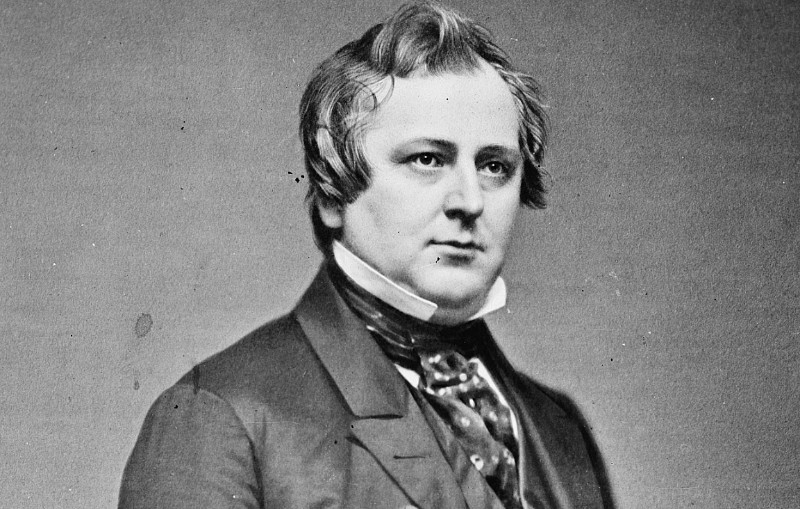
S.C. Encyclopedia | In the antebellum era and well into the twentieth century, oratory flourished in South Carolina as the expression and reflection of the values of the white male population. Orators described and defended those values in ways that were appreciated by their audiences; they were respected and at times revered as folk heroes. Throughout the South, oratory was the focus of southern life for rural and small-town audiences who had few other entertainments and little connection to the larger world. The impact of oratory was evident, from frequent joint debates held in most political campaigns, to Sunday sermonizing and summer camp meeting revivals, to courtroom lawyers arguing before their juries and large audiences of spectators, to ceremonial occasions such as the Fourth of July. In sum, oratory was a prime means of public education in the issues of the day, religious instruction, and public commemoration. South Carolinians practiced it as well as any other southerners, and better than most.
The love and practice of oratory did not emerge full-grown in antebellum South Carolina. South Carolina College, where training and experience in public speaking was a central focus of higher education, was a hothouse for developing orators. Within a year of the 1805 opening of the college, the first literary and debating club, the Philomathic Society, was organized. Less than a year later it was split into two nearly identical fraternal groups, the Clariosophic and the Euphradian societies. Over the next half-century, virtually every student at South Carolina College belonged to one or the other of these societies, where they heard and presented many a declamation or original oration and debated timely political, social, religious, and historical questions. Students understood, as did most educated southerners, that the supreme skill for a leader was oratory. An early historian of the college called the societies “the nursery of eloquence” and asserted that they provided a strong career start for “many of the distinguished men of Carolina.”
One of those distinguished men of Carolina was William C. Preston, called by some South Carolina’s Cicero. Preston was considered the “most finished orator of the Southern school.” But Preston was only one among many stars in the South Carolina oratorical gallery. In a region that held eloquence in the highest regard, the Palmetto State set the standard for the rest of the South. Probably no other southern state had as many outstanding well-known speakers in the antebellum years. Preston, Hugh Swinton Legaré, John C. Calhoun, James H. Hammond, James Hamilton, Dr. Thomas Cooper, Robert Y. Hayne, William Harper, and George McDuffie held their large and appreciative audiences enthralled by their rhetoric. The large issues of states’ rights, nullification, slavery, and impending war provided more than enough impetus for their oratory.
The tradition continued long after the Civil War, focusing primarily on political stump speaking and ceremonial oratory; it was the era of the “southern demagogue” and the “Lost Cause.” After Wade Hampton’s oratorical recollections of the Civil War helped to “redeem” South Carolina from Reconstruction, Benjamin “Pitchfork Ben” Tillman, Coleman Blease, and Ellison “Cotton Ed” Smith held forth on the hustings, defending the small farmer and upholding white supremacy and racial separation. Their oratory, based on fear tactics and emotion rather than reasoning and valid evidence, exploited the poor whites’ ability to vote, their deplorable economic conditions, and their long-standing fear of their black neighbors who were just below them on the economic ladder. Attacking scapegoats such as Wall Street, corporations, railroads, Jews, immigrants, and especially blacks, their language was violent and unrestrained, but they spoke for the little guys in the state who, up to that point, had felt they had no spokesmen.
Another prime venue for oratory in postbellum years, extending well into the twentieth century, was the ubiquitous ceremonial address proclaiming the “Lost Cause.” Delivered at countless Confederate veterans’ reunions, monument dedications, and Confederate Decoration Day ceremonies throughout South Carolina and the South, this oratorical genre created, glorified, and sustained a mythology of the Old South, the Civil War, and Reconstruction that remained alive long after the last veteran and commemorative orator were in their graves. Remnants of this oratory were still being heard in debates across the state over the placing of the Confederate flag on the State House grounds at the end of the twentieth century.
While radio, television, mass entertainment, and the Internet have made oratory mostly obsolete as a form of education and entertainment, it does continue in perhaps the only, certainly the leading, example of the old tradition of “stump” speaking left in America: the Galivants Ferry Stump Meeting. This popular political event is held every two years on the first or second Monday in May and is highly important in the tradition of South Carolina politics. Begun by Wade Hampton in 1876, this affair has continued unabated and in the early twenty-first century still drew as many as five thousand South Carolinians.
— Excerpted from an entry by W. Stuart Towns. This entry may not have been updated since 2006. To read more about this or 2,000 other entries about South Carolina, check out The South Carolina Encyclopedia, published in 2006 by USC Press. (Information used by permission.)
ABOUT STATEHOUSE REPORT
Statehouse Report, founded in 2001 as a weekly legislative forecast that informs readers about what is going to happen in South Carolina politics and policy, is provided to you at no charge every Friday.
Meet our team
- Editor and publisher: Andy Brack, 843.670.3996
- Statehouse correspondent: Lindsay Street
 Buy the book
Buy the book
Now you can get a copy of editor and publisher Andy Brack’s We Can Do Better, South Carolina! ($14.99) as a paperback or as a Kindle book ($7.99). . The book of essays offers incisive commentaries by editor and publisher Andy Brack on the American South, the common good, vexing problems for the Palmetto State and interesting South Carolina leaders.
More
- Mailing address: Send inquiries by mail to: P.O. Box 22261, Charleston, SC 29407
- Subscriptions are free: Click to subscribe.
- We hope you’ll keep receiving the great news and information from Statehouse Report, but if you need to unsubscribe, go to the bottom of the weekly email issue and follow the instructions.
- © 2019, Statehouse Report. All rights reserved.















